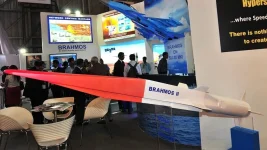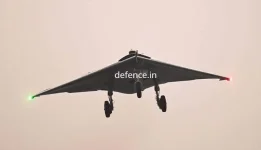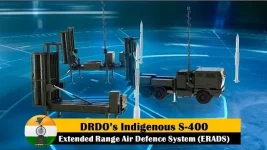- Views: 2K
- Replies: 3
India's Defence Research and Development Organisation (DRDO) is advancing preparations for a landmark test of a new hypersonic cruise missile, according to recently released tender documents.
The procurement details offer a rare insight into the progress of the highly secretive Project ET-LDHCM, which stands for "End-to-End Test of Long-Duration Hypersonic Cruise Missile," signalling a critical phase in India’s ambition to develop next-generation strategic weapons.
Hypersonic missiles are a class of ultra-fast weapons that travel at speeds greater than Mach 5 (five times the speed of sound) and can manoeuvre mid-flight.
Their immense speed and unpredictable trajectory make them extremely difficult for conventional air defence systems to track and intercept, positioning them as a transformative technology in modern warfare.
The tender documents specify the need for specialised manufacturing of equipment essential for assembling the missile. This includes multiple integration trolleys and jigs, which are custom-built frames and supports used to precisely align and join complex components like the missile's airframe and engine.
The call for this equipment indicates that DRDO is moving towards the physical assembly of a missile prototype for testing.
Highlighting the critical nature of the project, the documents impose stringent conditions on the manufacturing process. Suppliers must adhere to a strict Quality Assurance (QA) plan and maintain complete secrecy.
The DRDO's Hyderabad-based Defence Research and Development Laboratory (DRDL), the country's premier centre for missile systems design, will oversee the process.
The DRDL retains the authority to reject any component that deviates from the precise design specifications at any stage. All equipment must be delivered within a three-month timeframe and will undergo rigorous testing with dummy hardware before final acceptance.
This project builds upon DRDO's previous successes, including the Hypersonic Technology Demonstrator Vehicle (HSTDV), which was successfully flight-tested in September 2020.
That test demonstrated the crucial scramjet engine technology, which allows the missile to breathe air from the atmosphere for propulsion, enabling sustained hypersonic flight.
The development of the ET-LDHCM represents the next logical step, moving from a technology demonstration to an operational weapon system.
Successful development and deployment of this hypersonic cruise missile would place India in a select group of nations, including the United States, Russia, and China, that have or are actively developing such advanced capabilities.
This would provide India's armed forces with a significant strategic advantage, enabling rapid, high-precision strikes against critical, high-value targets from a long range.




